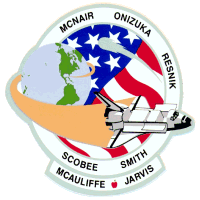Challenger

January 28, 1986
Commander:
Francis R. (Dick) Scobee, Lieutenant Colonel, USAF
Pilot:
Michael J. Smith, Commander, USN
Mission Specialist:
Judith A. Resnik
Ronald E. McNair
Ellison S. Onizuka, Lieutenant Colonel, USAF
Payload Specialist:
Gregory B. Jarvis
Sharon Christa McAuliffe



































3 comments
Looking at the photos of the explosion still makes me feel so sad, as if we somehow betrayed the triumphant expectations of the astronauts and the scientists. Was it hubris to think we could continue to send people up into orbit without occasionally paying the price?
Has it really been that long ago?
Was it hubris to think we could continue to send people up into orbit without occasionally paying the price?
No. It was arrogance and stupidity to think that NASA would make sound scientific and engineering decisions rather than Political ones. It was a disaster waiting to happen, sadly.
What really amazed and surprised me (though in hindsight it shouldn’t have) was that NASA didn’t go out of their way to ensure the success of such a public mission. It was just “business as usual”. I suppose, after a while, they really believed they had beaten the odds. I don’t know what they thought, maybe they didn’t think much at all.
Wikipedia: Space Shuttle Challenger disaster
And so, the bureaucrats strike again and Politics and capitalism wins the day over common sense, due diligence and professionalism (and many other outdated concepts, like truth and honesty).
People don’t tend to work very well at those temperatures, and the Air Force warms aircraft before starting engines below 40° to ensure the hydraulics will function properly, but they were pushing for on time take offs.
The crew was “PR’d” to death. PR was more important than flight safety.